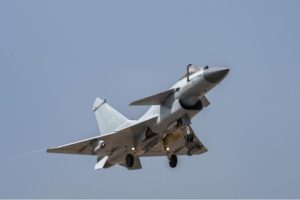
Military Junta Led Sahelian States Create New Collective Security Organization
By Jason Warner

The leader of junta currently ruling Mali, COL Assimi Goita, recently tweeted an announcement about the new mutual defense pact between Mali, Niger, and Burkina Faso.
“The military regimes led by Assimi Goïta in Mali, Ibrahim Traoré in Burkina Faso and Abdourahamane Tiani in Niger signed a charter on Saturday establishing a defensive alliance.”
With the string of coups d’état that have engulfed the African continent over the past three years, a steady drumbeat of alliances has been growing among military juntas.[i] As per the article from leading Africa-focused French language publication Jeune Afrique, the increasing amity between Mali, Burkina Faso, and Niger has coalesced into a formalized mutual security cooperation organization. Called the “Alliance of Sahelian States,” the grouping is a defensive alliance that commits each country to respond to the aid of the others in the event of any “attack on the sovereignty or integrity of the territory” of one of its members. Additionally, the Alliance of Sahelian States also includes economic dimensions (likely to help each of the regimes, all of which have faced threats of economic sanctions for unconstitutional transfers of power) and counterterrorism dimensions (as the three collectively constitute the epicenter of jihadist violence undertaken by Al-Qaeda and Islamic State-linked groups).[ii] While Mali, Burkina Faso, and Niger have been getting closer since 2022 – often with support from Russia[iii] – the real impetus for the formalization of the Alliance of Sahelian States was Niger’s July 2023 coup. In the aftermath, West Africa’s primary regional organization, the Economic Community of West African States (ECOWAS), threatened to launch a military intervention to restore power to the democratically elected president. This proposal starkly divided West African states, with Nigeria, Benin, and Senegal falling on one side, and Mali, Burkina Faso, Niger, and Algeria, on the other. Mali and Burkina Faso intuitively aligned behind Niger given the vulnerabilities that other military juntas would face if ECOWAS made good on its word. Whether or not the Alliance of Sahelian States is more than a paper tiger remains to be seen. However, the spate of military coups overtaking the region is having serious implications for patterns of alliances and rivalries.
Sources:
“Le Mali, le Burkina Faso et le Niger scellent ‘l’Alliance des États du Sahel’ (Mali, Burkina Faso, and Niger seal ‘The Alliance of Sahelian States’),” Jeune Afrique (centrist pan-African news outlet), 16 September 2023. https://www.jeuneafrique.com/1483586/politique/le-mali-le-burkina-et-le-niger-scellent-lalliance-des-etats-du-sahel/
The military regimes led by Assimi Goïta in Mali, Ibrahim Traoré in Burkina Faso and Abdourahamane Tiani in Niger signed a charter on Saturday establishing a defensive alliance.This “Charter of Liptako-Gourma” creates “the Alliance of Sahel States” (AES), wrote on X (former Twitter), the head of the junta in Mali, Assimi Goïta. Its goal is “to establish an architecture of collective defense and mutual assistance,” he stressed. The charter provides (art. 6) that “any attack on the sovereignty and integrity of the territory of one or more contracting parties will be considered as an aggression against the other parties and will engage a duty of assistance and relief of all parties, individually or collectively, including the use of armed force to restore and ensure security within the area covered by the Alliance.Since the July 26 coup in Niger, the Economic Community of West African States (ECOWAS) has maintained a consistent position: the military authorities must “restore constitutional order immediately” by releasing deposed President Mohamed. Bazoum and reinstalling him in his functions. The West African organization has repeatedly threatened armed intervention and imposed heavy economic sanctions on Niger.“This alliance will be a combination of military and economic efforts between the three countries,” Malian Defense Minister Abdoulaye Diop told journalists. “Our priority is the fight against terrorism in the three countries,” he added.
Notes:
[i] For more on the growing ties between these three countries, see: Jason Warner, “’Axis’ of Military Regimes Strengthens In West Africa, With Support From Russia,” OE Watch,09-2023. https://fmso.tradoc.army.mil/2023/axis-of-military-regimes-strengthens-in-west-africa-with-support-from-russia/; Jason Warner, “West African States Split On Potential Intervention In Niger,” OE Watch, 08-2023. https://fmso.tradoc.army.mil/2023/west-african-states-split-on-potential-intervention-in-niger/; Jason Warner, “West African States Ruled By Military Leaders Seek To Circumvent Future Sanctions,” OE Watch, 03-2023. https://fmso.tradoc.army.mil/2023/west-african-states-ruled-by-military-leaders-seek-to-circumvent-future-sanctions/; Jason Warner, “Russia-Supported Military Leaders In Mali, Burkina Faso, And Guinea Continue To Deepen Ties,” OE Watch, 04-2023. https://fmso.tradoc.army.mil/2023/russia-supported-military-rulers-in-mali-burkina-faso-and-guinea-continue-to-deepen-ties/
[ii] For more on the differing approaches that West African states have taken in dealing with these groups, see: Jason Warner, “As Sahelian Jihadists Expand South, Côte d’Ivoire Stands As Model Of Success,” OE Watch,09-2023. https://fmso.tradoc.army.mil/2023/as-sahelian-jihadists-expand-south-cote-divoire-stands-as-model-of-success/; Jason Warner, “Sahelian Countries Divided On Negotiating With Al-Qaeda, Islamic State Militants,” OE Watch,07-2023. https://fmso.tradoc.army.mil/2023/sahelian-countries-divided-on-negotiating-with-al-qaeda-islamic-state-militants/; Jason Warner, “Burkina Faso Claims Disguised Jihadists, Not Military, Responsible For Civilian Killings,” OE Watch, 06-2023. https://fmso.tradoc.army.mil/2023/burkina-faso-claims-disguised-jihadists-not-military-responsible-for-civilian-killings/; Jason Warner, “Vast Majority Of Malians Express Confidence In Russia’s Ability To Address Jihadist Violence,” OE Watch,06-2023. https://fmso.tradoc.army.mil/2023/vast-majority-of-malians-express-confidence-in-russias-ability-to-address-jihadist-violence/
[iii] For more on Russia’s role with these three countries, see: Jason Warner, “’Axis’ of Military Regimes Strengthens In West Africa, With Support From Russia,” OE Watch,09-2023. https://fmso.tradoc.army.mil/2023/axis-of-military-regimes-strengthens-in-west-africa-with-support-from-russia/; Jason Warner, “Burkina Faso Claims Disguised Jihadists, Not Military, Responsible For Civilian Killings,” OE Watch, 06-2023. https://fmso.tradoc.army.mil/2023/burkina-faso-claims-disguised-jihadists-not-military-responsible-for-civilian-killings/; Jason Warner, “Vast Majority Of Malians Express Confidence in Russia’s Ability To Address Jihadist Violence,” OE Watch, 06-2023. https://fmso.tradoc.army.mil/2023/vast-majority-of-malians-express-confidence-in-russias-ability-to-address-jihadist-violence/; Jason Warner, “Russia-Supported Military Leaders In Mali, Burkina Faso, And Guinea Continue To Deepen Ties,” OE Watch, 04-2023. https://fmso.tradoc.army.mil/2023/russia-supported-military-rulers-in-mali-burkina-faso-and-guinea-continue-to-deepen-ties/
Image Information:
Image: The leader of junta currently ruling Mali, COL Assimi Goita, recently tweeted an announcement about the new mutual defense pact between Mali, Niger, and Burkina Faso.
Source: https://t.co/IjT43NHrKs
Attribution: BY-SA 4.0
Distribution A: Approved for public release
Categories:
Tags:
Related Products
Chinese Military Exercises Highlight Improvements in Joint Operations
North Korean Media Stays Quiet Despite Global Concerns






